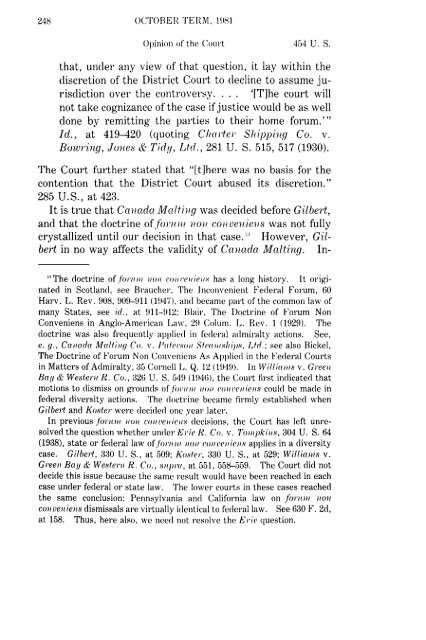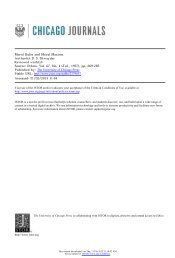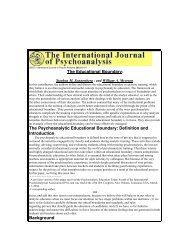Karayanni.FN023.Piper Aircraft v. Reyno.pdf - The University of ...
Karayanni.FN023.Piper Aircraft v. Reyno.pdf - The University of ...
Karayanni.FN023.Piper Aircraft v. Reyno.pdf - The University of ...
Create successful ePaper yourself
Turn your PDF publications into a flip-book with our unique Google optimized e-Paper software.
OCTOBER TERM, 1981Opinion <strong>of</strong> the Court 454 U. S.that, under any view <strong>of</strong> that question, it lay within thediscretion <strong>of</strong> the District Court to decline to assume jurisdictionover the controversy. . . . '[T]he court willnot take cognizance <strong>of</strong> the case if justice would be as welldone by remitting the parties to their home forum."'Id., at 419-420 (quoting Charter Shipping Co. v.Bowring, Jones & Tidy, Ltd., 281 U. S. 515, 517 (1930).<strong>The</strong> Court further stated that "[t]here was no basis for thecontention that the District Court abused its discretion."285 U.S., at 423.It is true that Canada Malling was decided before Gilbert,and that the doctrine <strong>of</strong> fbrnmn non con veniens was not fullycrystallized until our decision in that case. However, Gilbertin no way affects the validity <strong>of</strong> Canada Malting. In-"<strong>The</strong> doctrine <strong>of</strong> tor6rn ?oi con ceaiens has a long history. It originatedin Scotland, see Braucher. <strong>The</strong> Inconvenient Federal Forum, 60Harv. L. Rev. 908, 909-911 (1947), and became part <strong>of</strong> the common law <strong>of</strong>many States, see id., at 911-912: Blair, <strong>The</strong> Doctrine <strong>of</strong> Forum NonConveniens in Anglo-American Law, 29 Cohum. L. Rev. 1 (1929). <strong>The</strong>doctrine was also frequently applied in federal admiralty actions. See,e. g., Canada Maltig Co. v. Paoterson Steamship.s. Ltd.: see also Bickel,<strong>The</strong> Doctrine <strong>of</strong> Forum Non Conveniens As Applied in the Federal Courtsin Matters <strong>of</strong> Admiralty, 35 Cornell L. Q. 12 (1949). In WilliUMs v. GreenBay! & Western R. Co., 326 U. S. 549 (1946), the Court first indicated thatmotions to dismiss on grounds <strong>of</strong>.fiwmn non coc reniens could be made infederal diversity actions. <strong>The</strong> doctrine became firmly established whenGilbert and Koster were decided one year later.In previous ftorn non coit,enies decisions, the Court has left unresolvedthe question whether under Erie R. Co. v. Tompkins, 304 U. S. 64(1938), state or federal law <strong>of</strong>firom n)on' co eoiens applies in a diversitycase. Gilbert, 330 U. S., at 509; Koster, :330 U. S., at 529; Williams v.Green Bay & Western R. Co., sipra, at 551, 558-559. <strong>The</strong> Court did notdecide this issue because the same result would have been reached in eachcase under federal or state law. <strong>The</strong> lower courts in these cases reachedthe same conclusion: Pennsylvania and California law on .*bronn noncon veniens dismissals are virtually identical to federal law. See 630 F. 2d,at 158. Thus, here also, we need not resolve the Erie question.
















